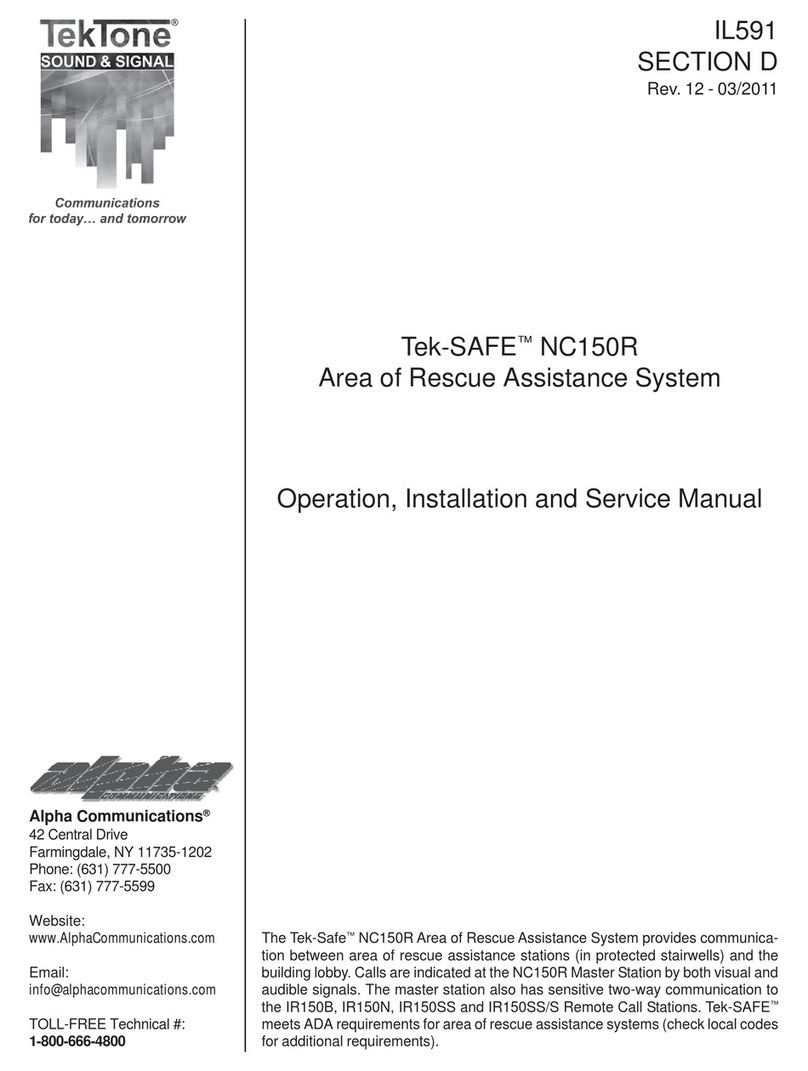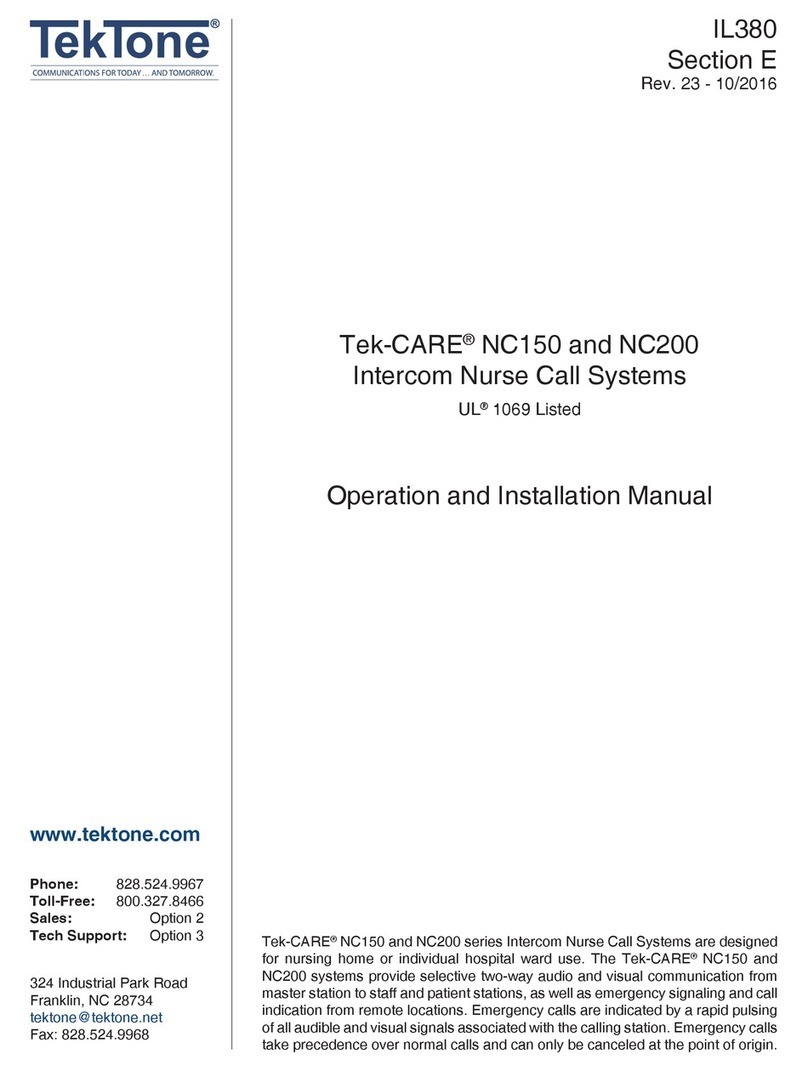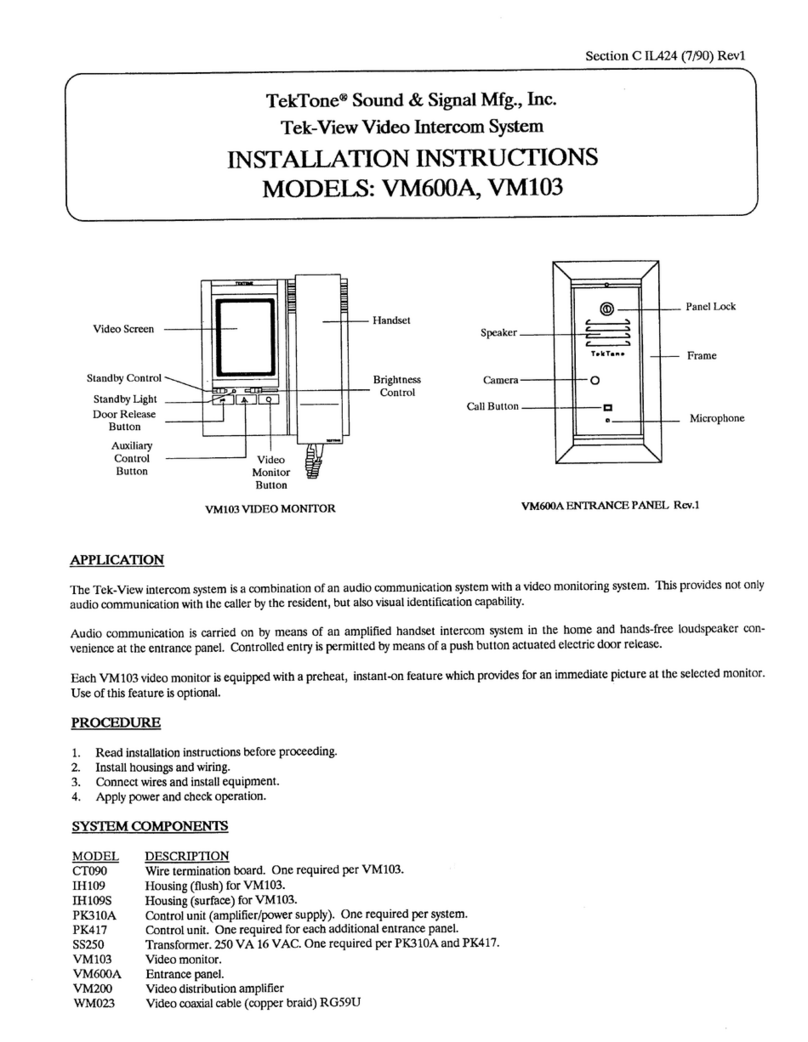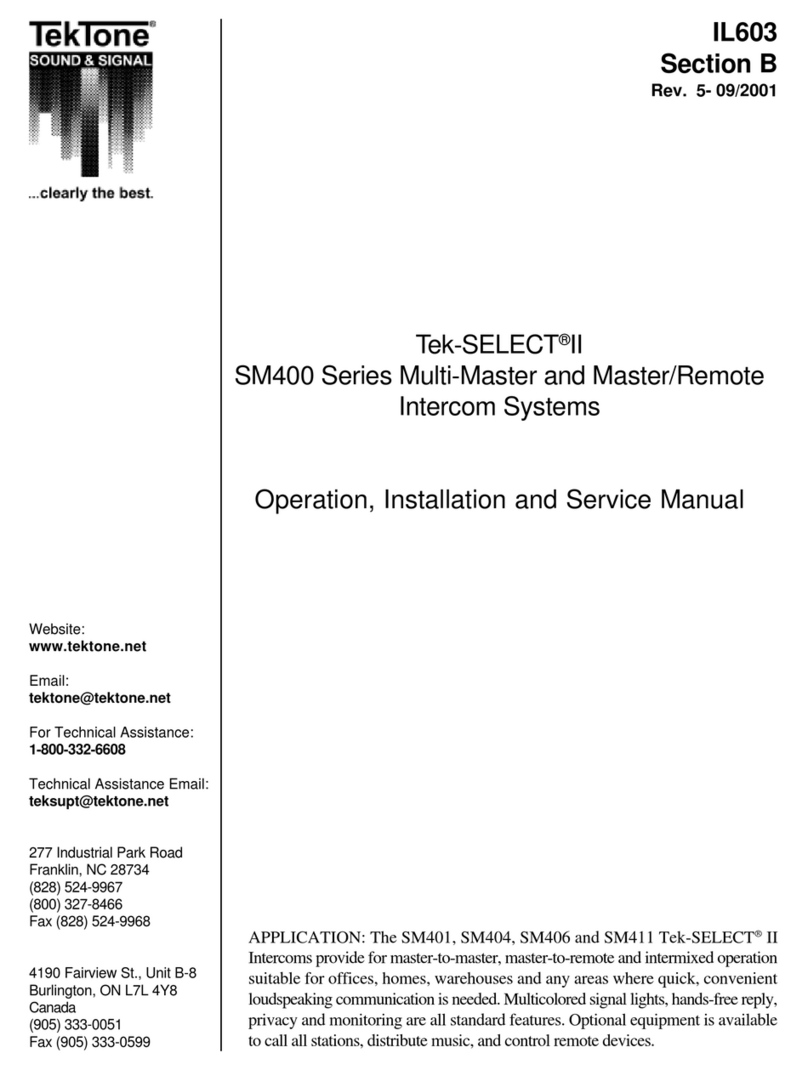
SF380 Single Patient Stations: The SF380 stations generate routine, cord-out and bath call placement
signals. These stations are mounted on single-gang boxes. The stations support both code and bath sig-
nals.
IR311 Single and IR312 Dual Patient Replacement Stations: The IR311 and IR312 stations are avail-
able as replacements. The jacks are 8P8C type—one for the IR311 and two for the IR312. Additional
headers are provided for specific pillow speaker-only connections—one for the IR311 and two for the
IR312 (refer to Figure 28 on page 43). These stations can interface with the PM311C/PM312C Intercom
Modules and the PM321B/PM322B Lamp Control Modules. See IR3xx-series Station—General Inform-
ation on page 9 for additional details.
IR319-series Single, IR320-series Dual Patient Stations: The IR319-series and IR320-series are
identical to the IR301-series and IR302-series, with the exception of the jack type and added pillow
speaker function control lines. The jacks are DIN type—one for the IR319-series and two for the IR320-
series. Additional headers are provided for specific pillow speaker-only connections—one for the IR319-
series and two for the IR320-series (refer to Figure 28 on page 43). These stations can interface with the
PM311C/PM312C Intercom Modules and the PM321B/PM322B Lamp Control Modules. See IR3xx-
series Station—General Information on page 9 for additional details.
PM311C/PM312C Pillow Speaker Intercom Modules: The PM311C (for IR311-series or IR319-series)
and PM312C (for IR312-series or IR320-series) modules connect to the patient station and allow the
nurse call system audio to be redirected from the patient station to the pillow speaker connected to it.
SF301PI series, SF301DIG, SF401DIG or SF41-series pillow speakers are required for this application. If
the connected call cord or pillow speaker does not support this function, the audio reverts back to the
patient station. The modules plug directly onto the back of patient stations and are subject to the same
environmental requirements.
PM321B/PM322B Light Control Modules: The PM321B (for IR311-series or IR319-series) and
PM322B (for IR312-series or IR320-series) modules allow SF301PL series, SF301DIG, SF401DIG or
SF41-series pillow speakers to activate control relays that can be linked via dry contacts to control over-
head and table lighting. The control relays are brought out on a separate header. (Refer to Figure 26 on
page 41.) WARNING: Connect only Class 2, Power Limited circuits (in accordance with ANSI/NFPA
70, ANSI/NFPA 99 and ANSI/UL®1069) to the PM321B or PM322B. If in doubt, contact the factory.
The modules plug directly onto the back of patient stations and are subject to the same environmental
requirements.
IR318 Resident Pull String Speaker Station: The IR318 is an audio-visual resident station for use when
a pull string is desired as compared to a push-button call cord. The station provides a speaker for two-
way audio communication, a pull string for call placement, a call reset button and indicators for call
placement assurance and in-use status. See IR3xx-series Station—General Information on page 9 for
additional details.
RY351B Hill-Rom®SideCom®Adapter: The RY351B provides an interface for the Hill-Rom SideCom
bed to the IR311-series, IR319-series, IR312-series (requires two RY351B) and IR320-series (requires
two RY351B) patient stations. This enables the intercom, call placement indication, and in-use indic-
ation functions of the SideCom bed to work with the nurse call system. The SideCom’s lamp and light-
ing controls are connected to the lighting control system and do not need to interface with the nurse call
system. The RY351B interface also detects the disconnection of the (low voltage) signaling cable from
the wall receptacle and places a noncancellable call to the programmed nursing Master Station. The
RY351B electronics are mounted on an aluminum bracket that can be used to mount the device on a
Steel City two-gang back box, part number 52171-1/2 and 3/4 with 52-C-13 single gang adapter ring.
The RY351B must be within 6′ of the patient station to which it is connected. The Hill-Rom P376 series
plug-in adapter must be installed within 10′ of the RY351B. The operating environment for the RY351B
is 10-40°C with relative humidity not exceeding 80%.
Copyright ©TekTone Sound and Signal Mfg., Inc. All Rights Reserved IL1057 Tek-CARE300III Installation Manual |9
System Installation































